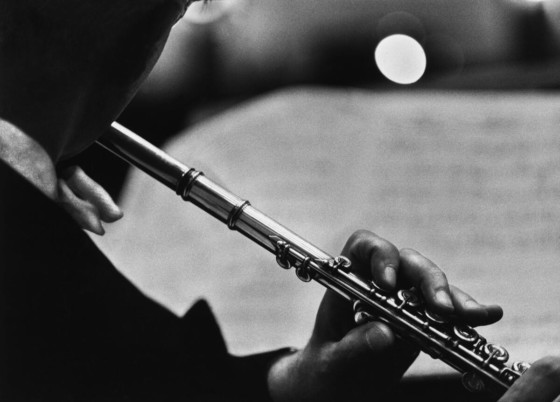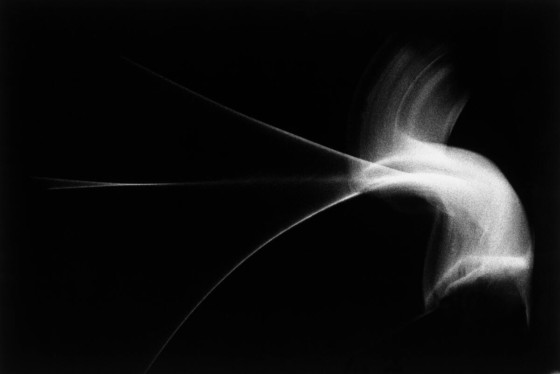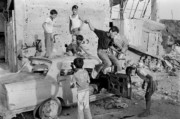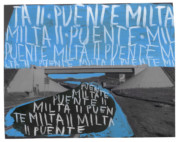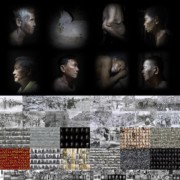Remembering Constantine Manos (1934–2025)
It is with great sadness that we announce the passing of beloved Magnum photographer Constantine Manos, aged 90.
Constantine “Costa” Manos began his photographic career when he was just 13, joining the school camera club in 1947 — incidentally, the same year Magnum Photos was founded. Within a few years, he was a professional photographer working at his local newspaper, and well on his way to becoming one of the most influential documentary photographers of his generation.
Born in 1934, in Columbia, South Carolina, USA, to Greek immigrant parents, Manos developed his love for photography in his early teens, but it wasn’t until he was 18 that he garnered a more substantial understanding and appreciation for the greater world of photography.
In 1952, he enrolled at the University of South Carolina. While there, he read an article in a magazine about the photographer Henri Cartier-Bresson, who, unbeknown to him, would become Manos’s mentor from afar. The young photographer went so far as to acquire the same equipment — a Leica rangefinder and Ilford film. That same year, Cartier-Bresson published Images à la Sauvette, or The Decisive Moment. Around the same time, Manos made his first serious photographs and “began a lifelong search for beautiful and poetic images.”
Manos was led by a concern for the social conditions of people in the American South. He had heard about an island off the coast of South Carolina, between Hilton Head and Savannah, Georgia, that sounded like the right subject matter for the kinds of pictures he wanted to take. Daufuskie Island, was and still is, the home of members of the Gullah Geechee, an African American community whose relative isolation allowed them to preserve some of the culture and language of their enslaved West African ancestors. While a student at his then-segregated university, Manos wrote and published anti-segregation editorials featuring several of these images.
His parents, Dimitri and Aphrodite (Vaporiotou) Manos, were from Avşa Island in the Sea of Marmara in Turkey. After the end of WWI, they were forced to Greece during the 1922–23 population exchange. They then emigrated to Columbia, SC, and eventually ran the Washington Street Cafe, which served only to a Black clientele during segregation. Dimitri was known as “Big Jim” and cooked what is known today as “soul food.”
Together, they encouraged Manos and his siblings to pursue their creative hobbies, from learning instruments to allowing Manos to use the basement of their house as a darkroom. Manos played the flute and his sister and brother played violin and piano. Becoming a lover of classical music, he was hired as the official photographer of the Boston Symphony Orchestra at its summer festival in Tanglewood when he was 19. His book, Portrait of a Symphony, about the orchestra, was published eight years later in 1961.
"I hope I can create a book of photographic poems, each unique yet all connected. "
- Constantine Manos
After graduating with a BA in English Literature in 1955, Manos became a Private in the U.S. Army, serving his draft time in Germany as a staff photographer with the Stars & Stripes for two years. Aside from his assignments for the newspaper, Manos found time to make pictures for himself during weekend leaves and longer furlough time. Over the course of a year, he shot approximately 60 rolls of film, which were processed and put away. In 2010, Manos pulled the forgotten rolls of film from his files, made contact sheets, and edited the work for the first time. After military service, he moved to New York, where he worked for Esquire, Life and Look. A portrait of a grieving woman at the funeral of a Black soldier killed in Vietnam was one of his most emblematic images, published in Look magazine in 1966.
His parents were Greek refugees, and after hearing stories about life in his father’s home village, Manos obtained a grant to pursue a documentary project in his familial home. In the 1960s, he lived in Greece for three years, where he made the photographs for his book A Greek Portfolio, inspired by the people he encountered there. First published in 1972, the book won awards at Arles and at the Leipzig Book Fair, and exhibitions of the work took place at the Bibliothèque Nationale de France in Paris and the Art Institute of Chicago.
It was in 1963, during his time in Greece, that his attempt to join Magnum Photos was successful. He became a full member two years later.
Composing his photographs with patience and serenity, Manos always sought to capture the magic of life as it is lived. “I am a people photographer and have always been interested in people,” he said. The Bostonians, his document of the diversity and dynamism of life in the city, was one such project, preoccupied with people. “Going out into the city with a small camera and making hundreds of pictures of people doing hundreds of things is a dizzying odyssey,” he said. “It’s like gathering the bits of an intimate mosaic.” In Boston, where he settled following his Greek travels, assignments for Time-Life books and the 1974 multimedia project Where’s Boston? fed initially into his larger survey of Bostonian people.
"Going out into the city with a small camera and making hundreds of pictures of people doing hundreds of things is a dizzying odyssey"
- Constantine Manos
Manos was interested in capturing freedom and joy in celebratory moments. His first self-led project after joining Magnum was a survey of color in the United States, ranging from the leisure habits of California’s beach dwellers, to beer-drinking bikers at Daytona Beach, to Mardi Gras and Gay Pride festivals. Though he was from South Carolina, Manos reflected that his life-long fascination with “the Americans” in this project arose from an outsider’s perspective, having been brought up in a Greek family. Images from the work first appeared in his book American Color, published in 1995, and later in American Color 2, published in 2010. Lyricism defines all of his work: “I hope I can create a book of photographic poems, each unique yet all connected,” he said.
One of the first openly gay Magnum photographers, Manos closely documented the March on Washington for Lesbian, Gay, and Bi Equal Rights and Liberation in 1993, as well as the 25th Anniversary of Stonewall in 1994. On May 17, 2004, Manos photographed the very first legal same-sex marriages in the U.S. in the small Massachusetts town of Provincetown, a long-time favorite gathering place of artists and the LGBTQ+ community.
Since 2008, Manos had lived in Provincetown with his husband and partner of 61 years, Michael Prodanou, a Greek /Canadian architect and painter. Their relationship began in Rome on May 16, 1963 — the same year that Manos joined Magnum. At the time, Prodanou lived across the street from the Pantheon on Via della Minerva and the pair met in a fish restaurant called “Mare Nostrum” around the corner. They married on December 11, 2011 in their Provincetown home.
In the last few years, Manos stopped making new photographs and teaching workshops, but a large body of work remains in his studio. Hundreds of images from the American Color series, all printed by Manos himself, remain unseen.
Manos is survived by his husband, Michael Prodanou; his sister, Irene Constantinides of Atlanta, GA; his brother, Theofanis Manos of Greenville, SC; as well as three nephews and a niece.
Manos’s photographs are in the permanent collections of The Metropolitan Museum of Art, New York; New York; Museum of Modern Art, New York; the Museum of Fine Arts, Boston; the Library of Congress, Washington, DC; the Art Institute of Chicago; the Bibliothèque Nationale de France, Paris; George Eastman House, Rochester, NY; the Museum of Fine Arts, Houston; the Benaki Museum, Athens; and the Provincetown Art Association and Museum, which presented a retrospective exhibition of his work in 2013. In 2003, Manos was awarded the Leica Medal of Excellence for his pictures from American Color.
In 2022, in a reception in Washington, DC, the Greek Prime Minister, Kyriakos Mitsotakis, on behalf of the Hellenic Republic of Greece, awarded Manos the Knight of the Order of the Phoenix. This honor is bestowed to Greeks who have excelled and who have helped raise Greece’s international prestige. Of the 10 people awarded this honor, Manos was the only one in the arts and letters.
“It is with deep sadness that I reflect on the passing of Costa Manos, an extraordinary photographer and a cherished member of Magnum Photos,” writes Magnum President Cristina de Middel. “Costa belonged to an earlier generation of Magnum, yet his work continues to inspire many of us who never had the chance to meet him personally. His ability to capture the poetry of everyday life with unmatched sensitivity and a keen eye for light and color has left an indelible mark on the history of photography.”
“As president of Magnum, I feel we have lost not just a remarkable artist but also a fundamental part of what makes our collective unique. Costa’s unwavering dedication to photography and to Magnum’s mission will remain an enduring example for us all. My heartfelt condolences go out to his friends and family. His legacy will live on in his images and in the inspiration he has provided to so many.”
Constantine Manos passed away on January 2, 2025, after a long battle with Alzheimer’s. He was 90.






